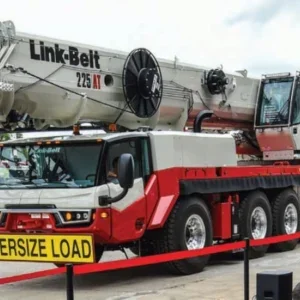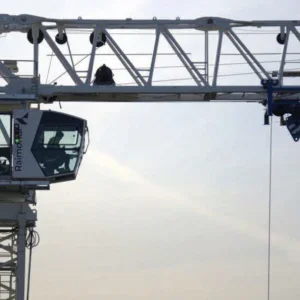Hundreds upon hundreds of precast concrete boxes, each weighing between 600t and 800t, will be lifted, carried, rolled and lifted again over the next two years in Taiwan. A variety of giant cranes and lifting gantries will do the work.
The concrete units are for the spine of a new high speed railway now under construction in this island country, just off the coast of mainland China. The new railway runs between the capital Taipei in the north to the southern port of Kaohsiung 345km away.
The massive build-operate-transfer (BOT) project is costing concessionaire and client Taiwan High Speed Railway Corporation some $15bn, which makes it one of the biggest projects currently being undertaken in Asia. Most of the line is above ground, although 50km of tunnelling is required, mainly in the north.
Above ground means literally that. Land is so expensive in this mainly mountainous country that roads and railways tend to be built on viaduct. This avoids land take, which matters: Taiwan is smaller than the Netherlands (Europe’s most densely populated country) but has 30% more people. Taiwan is a 36,000km2 island and the population is variously reported as 22 million or 24 million. Added to this, only 15% of the country is flat enough to be actually habitable. So where there is flat land, it cannot easily be spared for transport infrastructure.
Keeping transport at between 5m and 25m high also helps keep routes out of the summer floods that result from the region’s regular typhoons which deluge the land. More than 240km of line will be on viaduct, much of it continuously at the southern end.
The structures are not only long but must also be more heavily reinforced than usual. Taiwan is highly seismic, the result of a complicated three way tectonic collision between the Eurasian Plate and the Philippine Sea Plate.
Civils work began in March 2000 when the first of a dozen huge design and build contracts were let, ranging from $300m to $600m. Work has concentrated on a huge piling programme but now superstructure work is beginning. With so much to be done, most contractors are using factory methods.
On many of the contracts, which typically run 25km to 50km, viaduct sections are precast in big yards, then lifted onto the spans and carried on multi-wheeled loaders to lauching gantries.
Paola de Nicola of Italy has made a number of these launching units and in some cases is moving equipment too, on contracts led by Samsung of Korea and Germany’s Bilfinger+Berger. B+B is using a Kirow transporter for the viaduct sections, however. Each section measures 3.5m deep and is 35m long. Twin 440t capacity portal frame cranes lift the units from the casting beds to the viaduct.
On a contract led by Obayashi of Japan launching has been sublet to Austria’s VSL which has created its carrier/lifter with turnable wheeled tractor units at each end. It crabs 90° sideways at the casting yard to pick up units and then tracks along the viaduct. At the end the unit also launches the viaduct sections.
Cast-in-place formwork is also being used for some contracts for flexibility. But it is the lifting effort, unprecedented in such a project, that is key to the construction of most of the viaduct for the new line. Completion is scheduled for 2005, when the new type 7 Shinkansen Japanese high speed trains will begin speeding between Taipei and Kaohsiung at 300km/h.






